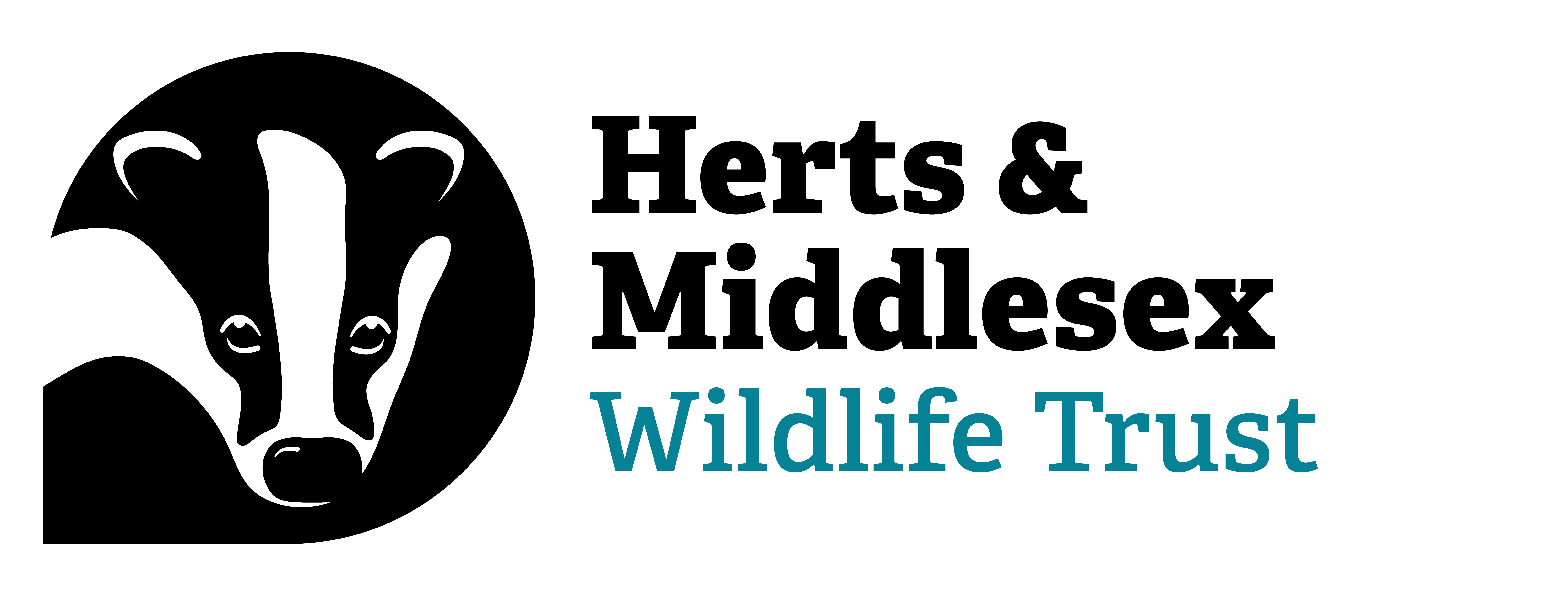
© Terry Whittaker/2020VISION
Water Voles in Herts and Middlesex
Get to know Water Voles
Water Voles are one of our most well-loved wild mammals. They are sometimes confused withr Brown Rats, but you can tell them apart by their chubby round faces, plump bodies, and blunt noses.
They were once a common species in England, but are now classified as Britain's fastest declining mammal as over 90% of their populations have been lost since the 1960s. This is largely due to habitat loss and predation by invasive, non-native American mink.
Water Voles need dense vegetation along waterways to survive as they eat about 80% of their body weight in food each day, which is mostly made up of wetland plants. They build their burrows along the water's edge and are very neat and tidy, some burrows even have trim lawns at the front!
Visit our Water Voles species page.
Why They’re Important
Like beavers, Water Voles are fantastic eco-engineers as they munch away at vegetation and keep river banks in good condition. By munching on vegetation, they prevent a few vigorous plants from taking over, allowing a wider variety of species to flourish. Their burrowing creates habitat for insects and helps shape healthy riverbanks. By eating and transporting seeds, they also encourage lush plant growth along waterways, benefiting countless other animals.
Many of the places Water Voles once thrived in are no longer suitable for them. Intense grazing up to the water's edge, mowing and development has destroyed many habitats where water vole colonies once survived.
But there is a more pressing problem facing Water Voles: predation by American Mink, a non-native mustelid that was bought to the UK and kept in captivity to supply the fur trade. The mink escaped, were released and began spreading throughout the country, rapidly consuming and reducing Water Vole populations.
Water vole (https://www.youtube.com/watch?v=oPd3pYOEKFo)
Water vole (c) Russell Savory
What We’re Doing
Here in Hertfordshire and Middlesex, we’ve set an ambitious goal: to have Water Voles thriving on every river by 2030. Achieving this means tackling threats like American Mink, restoring healthy wetland habitats, and carefully reintroducing Water Voles to rivers where they’ve been lost.
Reintroductions take careful planning. Before any release, sites are surveyed for habitat quality, mink control is carried out, and soft-release pens are used to give the animals the best possible chance to settle and survive.
Our Successes
In December 2024, a report from The Wildlife Trusts showed a national decline of 39% in occupied Water Vole areas since 2006. But here in Hertfordshire, there’s good news. Sustained conservation efforts mean that two river catchments in our counties have now reached “Regional Key Area” status, recognising their vital role in Water Vole recovery.
We have a proven track record in reintroducing Water Voles successfully to our counties’ rivers:
In 2015, the Trust reintroduced 188 to Thorley Wash Nature Reserve in the River Stort. This reintroduction relocated voles from further down the river near Clacton and released them up North to Thorley Wash.
Read more about the Thorley Wash reintroduction here.
In August 2021, the Trust delivered another reintroduction of Water Voles in partnership with the Ver Valley Society into the River Ver. After a 34 year long absence of Water Voles, a stretch of the river now has a thriving population of voles after 150 were transported and released in soft release pens along the water's edge.
Read more about the River Ver reintroduction here.
River Beane (2022): Working with the Woodhall Estate and the River Beane Restoration Association, we reintroduced 138 Water Voles to a stretch near Watton-at-Stone. Bred in Devon by the Derek Gow Consultancy, these voles marked the species’ return to the Beane after more than 20 years.
Read more about the River Beane reintroduction here.
Reintroducing Water Voles is no mean feat. Considerable planning and preparation go into one reintroduction as steps to ensure the species will settle in the area and survive the harsh realities of a wild world for a Water Vole, must be followed meticulously.
How you can help Water Voles in Herts
You can play a part in bringing Water Voles back to our rivers. By supporting our work, you’ll help us continue reintroductions, protect habitats, and keep rivers healthy for wildlife.
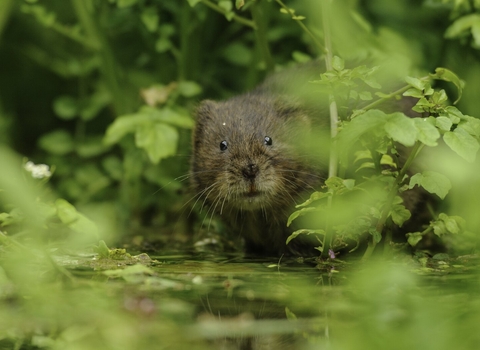
Water vole © Terry Whittaker/2020VISION
Record sightings of water voles
We love to know if local water vole populations are doing well, or moving around the natural corridors in waterways around the county.
If you see water voles around Hertfordshire and Middlesex, send the location with a photo if you have taken one to Josh, our Water Vole Officer at water.vole@hmwt.org.

Josh Kalms carrying out Water Vole training (c) Tom Mason
Train to become a water vole surveyor
Want to get involved with water voles on the ground? Train with our expert Water Vole Officer to track signs of water voles and survey for their presence in areas around Herts and Middlesex.
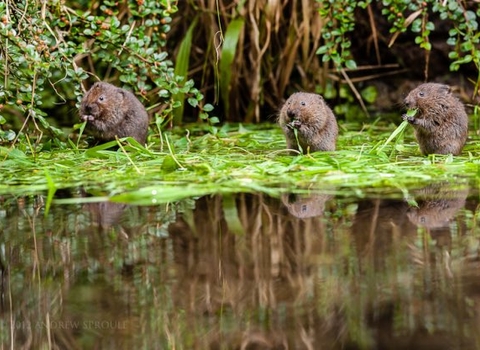
Work with us to reintroduce water voles to the county
Are you a landowner? Get in touch with us about a waterway or wetland site which could be the perfect place for a water vole reintroduction by emailing Josh Kalms, Herts and Middlesex Wildlife Trust Water Vole Officer at water.vole@hmwt.org.
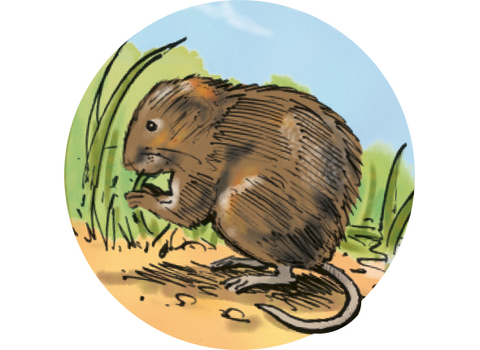
Sponsor a water vole
Our wildlife sponsorships are a great way to support the Trust's work in conserving and restoring wildlife in Herts and Middlesex. Purchase a postal or digital water vole sponsorship through our wildlife shop to help these wonderful mammals and to see more of them in local waterways.
Related news
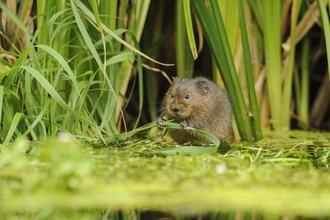
The Effectiveness of Monitoring Water Voles with Artificial Floating Rafts
Discover how volunteering with the Trust led Linda Butterfield to undertaking a Masters project to inform future Water Vole monitoring…
Water Voles Return to the Upper River Lea After 20-Year Absence
Trust reintroduction sees one of the UK’s most threatened mammals back on the Upper River Lea.
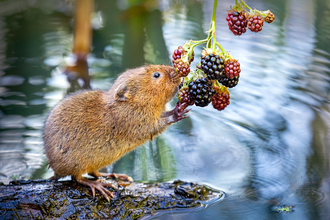
New Report Finds Conservation Projects are Delivering Hope for Hertfordshire's Water Voles
New report identifies heartening increases in Water Vole populations in our area, coinciding with the conservation efforts of the Trust…
